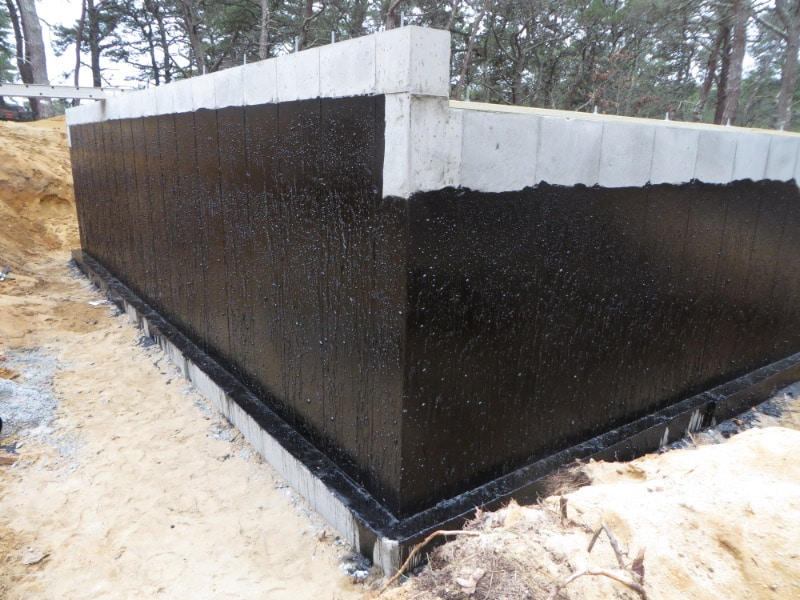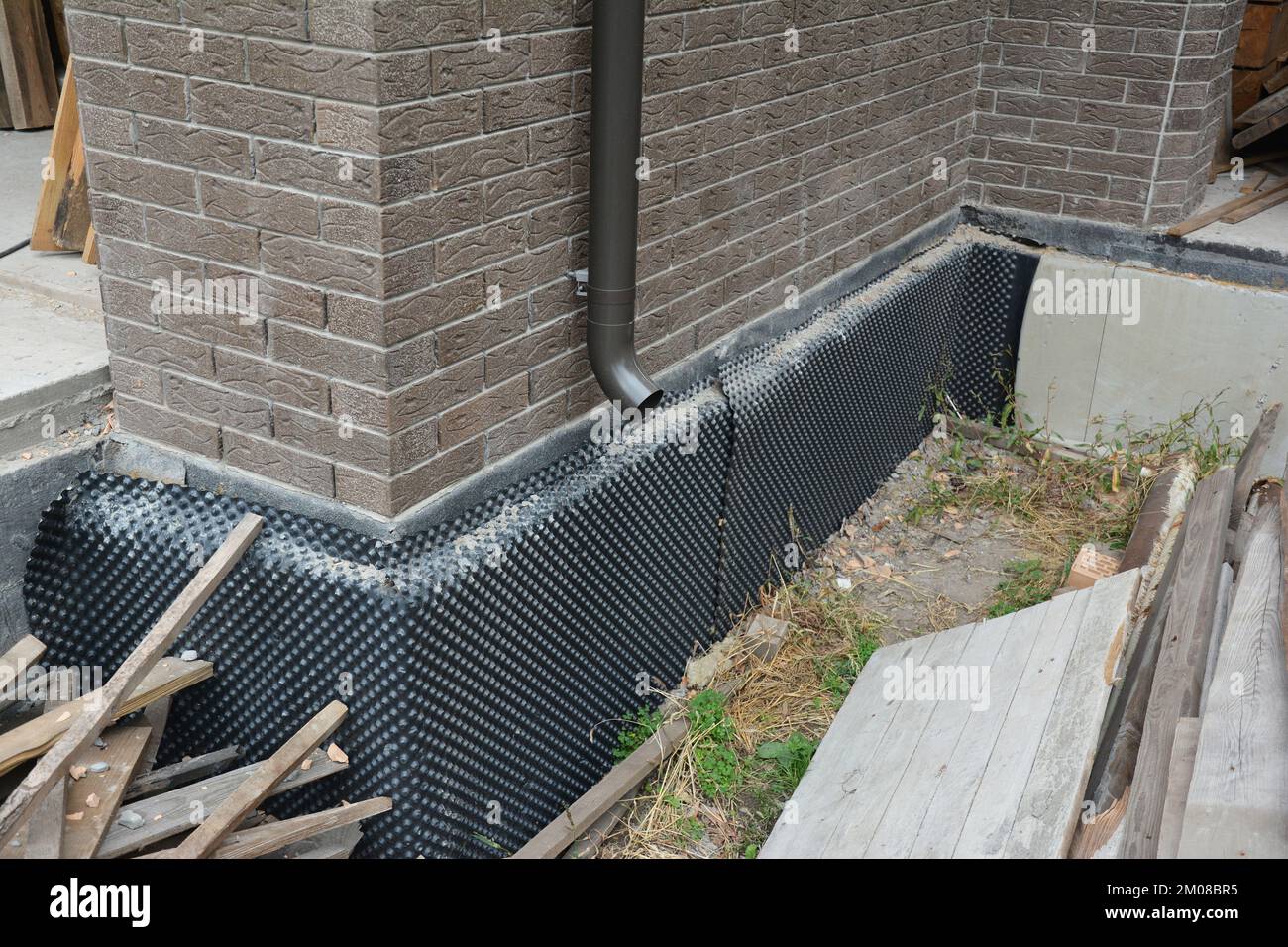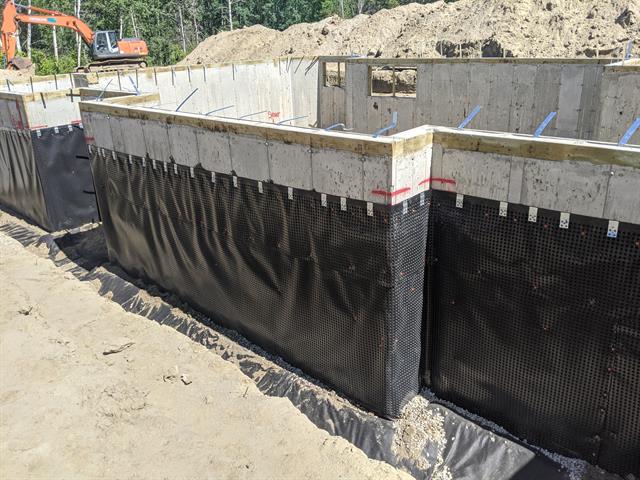Key differences rising vs. penetrating damp explained by a damp specialist newcastle
Key differences rising vs. penetrating damp explained by a damp specialist newcastle
Blog Article
Discovering the Various Strategies and Solutions for Effective Damp Proofing
Dampness in buildings presents significant difficulties to both architectural stability and interior air quality. Numerous strategies and services have actually emerged to fight this pervasive issue. From typical damp-proof membrane layers to innovative chemical treatments, each method provides special benefits. Understanding these choices is vital for efficient wetness control. Selecting the best service depends on particular building conditions and requirements, triggering further expedition into the most effective wet proofing approaches readily available.
Comprehending the Root Causes Of Wetness
Although dampness can develop from various resources, recognizing these causes is vital for reliable remediation. Generally, wetness stems from three primary sources: rising moist, penetrating wet, and condensation. Rising wet happens when groundwater takes a trip up with porous products, such as brick or stone, typically because of an absence of an effective obstacle (damp specialist newcastle). Permeating damp is normally triggered by exterior elements, consisting of roofing system leakages, faulty rain gutters, or harmed walls, permitting water to infiltrate a property. Condensation, on the various other hand, results from excess dampness in the air, commonly exacerbated by poor air flow and temperature distinctions, leading to water droplets basing on surfaces. Determining these underlying concerns is essential, as each kind of dampness needs a customized approach for removal. Proper analysis helps in establishing the most efficient remedies, ultimately protecting the architectural honesty of a structure and enhancing indoor air high quality
Traditional Damp-Proof Membranes

Chemical Damp-Proofing Solutions
Chemical damp-proofing solutions offer a cutting-edge technique to avoid dampness intrusion in buildings. These techniques typically involve the application of liquid chemicals that pass through stonework and develop an obstacle versus rising moist. Frequently made use of chemicals include silanes, siloxanes, and other water-repellent agents that react with surface products to create a hydrophobic layer.The application process generally calls for exploration openings right into the wall surfaces, infusing the chemical service, and enabling it to cure. This approach is specifically advantageous for older structures where typical damp-proof membranes might be impractical. Additionally, chemical damp-proofing can be less disruptive and a lot more economical than comprehensive remodelling projects.While effective, these remedies depend upon proper application and ecological conditions for peak efficiency. Normal maintenance and surveillance are vital to ensure the longevity of the damp-proofing treatment. Generally, chemical damp-proofing stands for a functional alternative for protecting buildings against moisture-related damage
Cavity Wall Surface Building Methods
Cavity wall surface building methods use many advantages, particularly in wetness control and energy efficiency. By including an air space between 2 layers of masonry, these wall surfaces efficiently alleviate water access while enhancing insulation. This combination not only secures frameworks from wetness but also contributes to minimized power intake.
Benefits of Tooth Cavity Wall Surfaces
When considering efficient moist proofing techniques, the benefits of tooth cavity wall surfaces attract attention plainly. Dental caries walls contain two separate layers, creating an air gap that successfully minimizes dampness infiltration. This layout minimizes the risk of dampness, as the external wall surface works as a barrier against rainfall and water access. Furthermore, tooth cavity wall surfaces improve thermal insulation, which adds to energy efficiency by decreasing warm loss. They additionally provide sound insulation, aiding to develop a quieter indoor environment. Additionally, the air space permits ventilation, which assists in wetness control and minimizes the probability of mold growth. These advantages not only improve the total comfort of a structure yet likewise contribute to its longevity and architectural stability.
Wetness Control Methods
Reliable moisture control approaches are important in dental caries wall building and construction to guarantee long-lasting defense against dampness. One key method involves the unification of weep openings, which help with water drain from the dental caries, protecting against build-up. In addition, the use of breathable membrane layers can assist take care of moisture degrees while enabling entraped vapor to leave. Proper positioning of insulation is likewise essential, as it must not obstruct drain paths. Guaranteeing that the external leaves of the cavity wall surface are built with water-resistant products improves overall sturdiness. Normal upkeep checks are vital to identify any obstructions or damages early, securing the framework's stability. Eventually, a combination of these methods develops a robust defense versus moisture invasion in dental caries walls.
Insulation and Power Effectiveness
Insulation plays a vital function in improving power efficiency within cavity wall construction. By incorporating insulating materials, these wall surfaces develop a thermal obstacle that decreases warmth loss and decreases energy consumption. Effective insulation not just aids preserve a secure indoor temperature yet also reduces the risk of wetness, as it stops condensation within the wall cavity. Different methods, such as making use of inflexible foam boards or mineral wool, can be used to attain excellent insulation efficiency. Additionally, correct setup is important to guarantee that voids and spaces are decreased, which can or else compromise power efficiency. Inevitably, a well-insulated tooth cavity wall surface adds significantly to overall sustainability and lowers heating and air conditioning costs for property owners.
Exterior Damp Proofing Methods
Outside wet proofing techniques are necessary for protecting structures from dampness seepage. Two reliable techniques include the application of water-proof membranes and the installation of French drains. These options help reduce water buildup and maintain the stability of buildings.
Waterproof Membrane Layer Application
While different methods exist for protecting against wetness ingress, the application of water resistant membranes stays a highly efficient exterior damp proofing method. These membrane layers are normally made from products such as polyethylene, rubber, or changed bitumen, supplying a robust barrier versus water infiltration. The setup process includes using the membrane layer to the external surface areas of walls or structures, ensuring complete coverage to avoid leaks. Proper bond and sealing at joints are crucial to optimizing efficiency. Waterproof membrane layers can be applied in different types, including liquid finishings and sheet membranes, permitting for adaptability based upon the details demands of the framework. This technique not only secures buildings from dampness however also improves their long life and architectural honesty.
French Drainpipe Installment
One effective approach for taking care of groundwater and protecting against moisture buildup around a building's foundation is the installation of a French drain. This water drainage system contains a trench full of gravel and a perforated pipe that reroutes surface area water away from the structure. Correct installment needs careful preparation, making certain that the drain slopes far from the structure to help with optimal water circulation. Furthermore, the location of the drainpipe is crucial; it ought to be placed in areas prone to merging or excess moisture. Normal upkeep, consisting of cleaning particles from the crushed rock and guaranteeing the pipeline stays unobstructed, is important for lasting performance. Eventually, a well-installed French drain can significantly lower the threat of water-related concerns in cellars and foundations.
Interior Waterproofing Approaches
Inside waterproofing approaches are crucial for shielding a building's inside from moisture infiltration and possible water damage. These methods usually involve the application of specific products and damp specialist newcastle strategies developed to develop a moisture obstacle within the structure. One usual method is making use of waterproof layers or sealants on walls and floorings, which protect against wetness from permeating surfaces.Additionally, mounting interior drain systems, such as sump pumps, can properly handle water accumulation in cellars and creep spaces. One more technique entails using vapor obstacles, which are set up to prevent moisture motion from the ground right into living spaces.Moreover, attending to any fractures or gaps in walls or foundations with ideal sealers guarantees an extensive defense versus water intrusion. By carrying out these interior waterproofing strategies, building owners can substantially lower the danger of mold and mildew growth, architectural damages, and other moisture-related concerns. Correct execution of these techniques is necessary for long-lasting security and building integrity.
Normal Upkeep and Evaluation Practices
Routine maintenance and examination techniques are crucial for ensuring the long-lasting efficiency of moist proofing remedies in any kind of structure. Regular checks allow homeowner to identify early indications of moisture intrusion, such as peeling off paint, mold and mildew development, and mildewy odors. These indications can signify underlying problems that need instant attention.Inspections should be performed at the very least every year, concentrating on susceptible areas like basements, creep areas, and outside wall surfaces. Throughout these evaluations, building proprietors must examine sealers, drainage systems, and air flow to verify they work correctly.Additionally, preserving downspouts and rain gutters is important, as clogged up systems can lead to water buildup near the foundation. Applying a regular upkeep timetable, along with prompt repairs, can significantly expand the lifespan of moist proofing procedures and protect the architectural honesty of the building. Positive actions eventually add to the total health and wellness and safety and security of the living setting.
Frequently Asked Inquiries
Just How Long Does Damp Proofing Commonly Last?
The duration of damp proofing efficiency differs, generally lasting in between 20 to half a century. Factors such as application quality, environmental problems, and maintenance methods significantly affect the long life of the wet proofing therapy.

Can I Damp Proof My Home Myself?
The specific considered the feasibility of DIY damp proofing. With proper research study and the right materials, it is feasible. They also identified the significance of professional support to guarantee resilient effectiveness and avoid future concerns.
What Are the Signs of Ineffective Damp Proofing?
Signs of inadequate wet proofing include relentless moldy smells, noticeable mold and mildew development, peeling off paint, moist patches on wall surfaces, and wood decay - mould removal newcastle. House owners ought to address these issues quickly to stop further damage and health problems
Does Damp Proofing Affect Indoor Air Top Quality?

How Much Does Professional Damp Proofing Cost?
Expert wet proofing expenses vary substantially, generally ranging from $1,000 to $5,000 relying on the building's dimension, the extent of the damp problem, and selected approaches. Each situation requires a tailored evaluation for exact rates. Commonly, dampness originates from three main resources: climbing damp, passing through wet, and condensation. When considering efficient moist proofing techniques, the benefits of dental caries wall surfaces stand out plainly. External damp proofing methods are vital for shielding structures from moisture seepage. While various techniques exist for preventing moisture ingress, the application of waterproof membranes remains an extremely effective outside damp proofing technique. Signs of ineffective moist proofing include persistent mildewy smells, visible mold growth, peeling paint, damp spots on wall surfaces, and timber degeneration.
Report this page